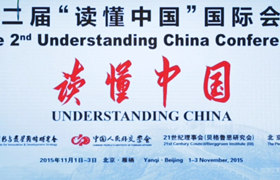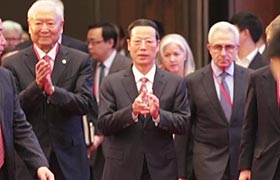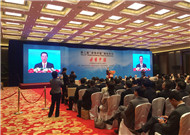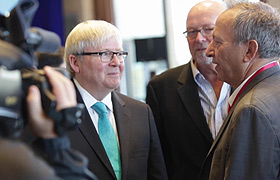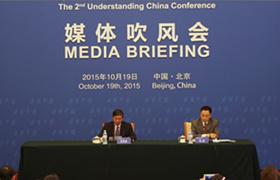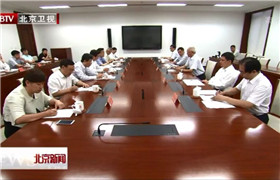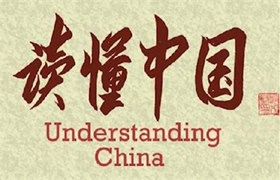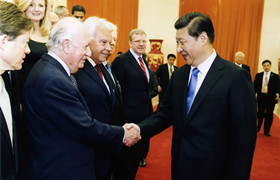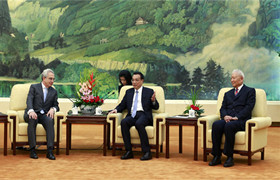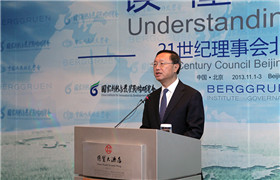- HOME--> Research
-
China’s Path of A Peaceful Rise
Source:CIIDS
Following the convening of the 16th National Congress of the Communist Party of China, the CPC Central Committee under the leadership of Secretary General Hu Jingtao solemnly put forward China’s development path of a peaceful rise. This approach is based on a summary of the successful practice of the CPC in its practice of socialism with Chinese characteristics since reform and opening up, as well as an incisive analysis and understanding of the domestic and international situations and major strategic opportunities faced by China since the beginning of the 21st century, in response to the arguments in international public opinion propagating "China threat" and "China collapse". It should be noted that the inception and establishment of "China's peaceful development" reveals the scientific connotation of the approach to socialism with Chinese characteristics and distinctively reflects the unity in China’s internal and external policy.
In a nutshell, the development path of peaceful rise can be concluded as follows: China strives for a peaceful international environment to support self-development and leverages its own development to safeguard world peace. To be more specific, we aim at independently building socialism with Chinese characteristics in an age themed on peace and development and in a process linked to rather than disengaged from economic globalization, so that China can rise as a staunch force for safeguarding world peace.
Five major characteristics of China’s peaceful rise
First, unswervingly regard economic development as the central task and take development as the top priority in the governance of the CPC for rejuvenating China.
Second, boldly cling to opening-up and remain linked to rather than disengaged from economic globalization. During the past 25 years, China encountered two historic junctures and made two strategic choices in its peaceful rise, both demonstrating the significance of the opening up policy.
The first juncture came in the late 1970s, where the CPC corrected its own mistakes made in the "Cultural Revolution," rethinking the fundamental issue of what socialism was and how it should be built. This coincided with the booming new revolution of science and technology and a new round of economic globalization. The Chinese Leadership under Deng Xiaoping incisively noticed the trend, and then they made a decisive judgment: “Today's world is an open world, where China's development is an integral part.” By implementing the policy of reform and opening up, China timely grasped the opportunity to take part in a new round of economic globalization, and its drive for building socialism with Chinese characteristics has since been closely linked with the globalization. This called for China to choose a new path of development in the era of reform and opening up, which was in fact the self-improvement of the socialist system under the globalization context.
The second historic moment came in the 1990s, when economic globalization and anti-globalization wrestled against each other worldwide, coupled with the Asian financial crisis, a tough test for China’s development path of peaceful rise. The Jiang Zemin Administration decided to get further engaged in economic globalization following the principle of "seeking advantages and avoiding disadvantages" after weighing all the aspects and realities concerned. As a result, China brought its opening up to a new phase yet still standing on its own two feet. China's entry to WTO was another historic strategic choice, supported by a full range of strategic initiatives to expand opening-up, a combination of "bringing in" and "going global." Thus, China's peaceful rise linked to economic globalization is generated from the overall understanding of both domestic and international landscape as well as from the inclusive consideration of the positive and negative sides of economic globalization. We are courageous, firm, sober and rational.
Third, insist on relying on our own while actively engaged in economic globalization.
Namely, we shall make full use of both domestic and international markets and resources, striving for modernization fundamentally backed by China’s own strength, being self-conscious of "the five pivots:" proprietary concept updating and institutional innovation; independent industrial restructuring; the development of a growing domestic market; the constant conversion of an ever-growing household savings into investment; and the broader and deeper exploitation of human resources, i.e. improving the quality and accelerating scientific and technological progress to solve resource and environmental problems.
The five pivots, enabled by the integration of beneficial achievements of all civilizations, including developed capitalist countries, in addition to the Chinese civilization carried forward, highlight the foothold of China’s peaceful rise as mainly relying on its own strength (including the dynamic culture) to solve problems encountered in the development without causing troubles to other countries.
Fourth, firmly stick to reform while coordinating the strategic relations and interests of all parties concerned to strike a balance between reform, development and stability.
Firmly sticking to reform means to forge ahead with economic, political and cultural restructuring with the socialist market economy, socialist democracy and advanced socialist culture as the basic connotation in unswerving adherence to the four cardinal principles, which will be regarded as essential for the foundation of a nation, and reform and opening up as access to national greatness, to provide institutional guarantee on China’s peaceful rise. Coordinated efforts refer to concerted development between urban and rural areas as well as across regions, both socially and economically. This also involves coordination between domestic development and opening up by addressing all kinds of new bonds and conflicts of interest emerging in the process so as to form a harmonious and stable community necessary for a peaceful rise.
Fifth, struggle to rise following the independent foreign policy of peace, and never seek hegemony. During the past 25 years, China’s practice in its peaceful rise and development proved to be a road not taken before: we abandoned the seclusion policy ruling modern China, which was based on an arrogant, shortsighted misconception that a country could achieve self-development in isolation. Meanwhile, we rejected the shortcut chosen by imperial powers in the modern world, which launched wars of aggression to break the existing international system and relied on bloc confrontation for expansion and hegemony. We have been determined to follow a peaceful rise path, striving for a peaceful international environment for self-development, which will in turn contribute to the maintenance of world peace. We are already on it, and will continue our journey.
The declined prosperity during the reign of Emperors Kangxi and Qianlong in late Chinese feudal society teaches us a lesson: a nation that shuts its door to the world is bound to fall behind and suffer aggression. But the powers rising in modern history, such as Germany in World War I, Germany and Japan in World War II, and the Soviet Union in the last Cold War period, also highlighted a fact: it is infeasible for a nation to seek a rise relying on expansion, aggression, even the World Wars, or the Cold War and bloc confrontation. Hegemony leads to militaristic resolutions, which definitely triggers opposition. Mao Zedong, Deng Xiaoping and Jiang Zemin reiterated to the CPC and the Chinese people that we would not seek hegemony now and ever, even when China has grown more powerful in the future, by which we are required to educate our future generations. We firmly believe that only by adhering to the independent foreign policy of peace without seeking hegemony and taking the development path of a peaceful rise can we solve the ever-challenging problem in human history: the modernization endeavor for a population of 1.3-1.5 billion.
China's development path of a peaceful rise is an organism integrating socialism with the revitalization of a nation, the world's development trends, and capitalism, where two systems coexist in peace, competing with while learning from each other.
The term "China's peaceful rise" herein indicates a historical process from the end of 1978, when the Third Plenary Session of the 11th CPC Central Committee was convened, to the middle of this century, when China is supposed to generally complete its modernization cause through reform and opening up for sustained, rapid, coordinated and healthy growth with the theme of peace and development. This development path of a peaceful rise is a peaceful approach to China's modernization and to the rejuvenation of the Chinese nation.
-
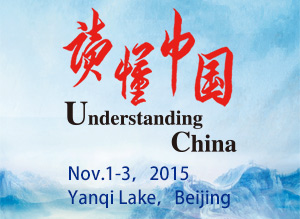
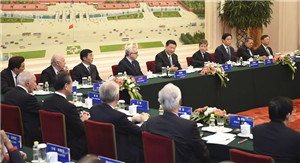
The 2nd "Understanding China" ConferenceOn November 1~3, 2015, the 2nd “Understanding China” Conference was held in Beijing Yanqi Lake International Conference Center. Zhang Gaoli, Vice Premier of the State Council, attended the opening ceremony.
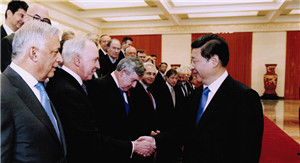
The 1st "Understanding China" ConferenceOn November 1~3, 2013, the 1st “Understanding China” Conference was held in Beijing, which was cosponsored by China Institute for Innovation & Development Strategy (CIIDS), Chinese People’s Institute of Foreign Affairs (CPIFA), and Berggruen Institute on Governance.
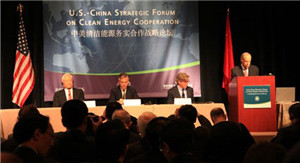
The 2nd U.S.-China Strategic Forum on Clean Energy CooperationWith the “Prospects for U.S.-China strategic cooperation in next decade” as its theme, the forum dwells on the implications of U.S.-China cooperation from the strategic perspective of coping with global challenges and maintaining world peace.
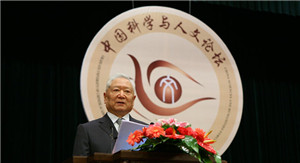
The China Sciences and Humanities ForumCo-initiated in April 2003 by renowned Chinese scientist Mr. Lu Yongxiang and influential political strategist Zhen Bijian, China Sciences and Humanities Forum was jointly hosted by Graduate University of Chinese Academy of Sciences (GUCAS) and the Higher Education Press.

